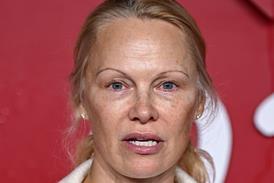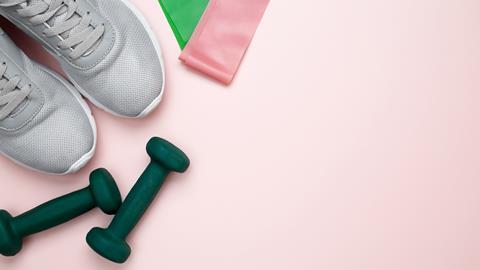Dr Becky Howie explains why physical activity is so vital for your overall wellbeing – regardless of age
This month, I want to focus on movement. I was prompted to write about this after seeing a patient who believed that exercise is primarily for weight loss.
Evidence shows that exercise isn’t an effective strategy for weight loss. Our bodies attempt to maintain equilibrium, which means they work to keep our weight stable, often triggering hormone releases that stimulate appetite. If you’ve trained hard for an event, you might notice your appetite significantly increases to compensate for your energy expenditure. Don’t get me wrong; physical activity does contribute, but weight loss is fundamentally about nutrition. Have you heard the saying: “You can’t outrun a bad diet?” There is a great deal of truth in it.
The benefits of movement
So, if physical activity doesn’t directly lead to weight loss, why encourage more of it? We know that motivation to move can be tricky, so what are the benefits?
Physical activity has been proven to provide immense health benefits. You will notice I tend to talk about physical activity rather than exercise. Over the years, I have found that the term ‘exercise’ conjures up images in people’s minds of donning Lycra and hitting the gym.
Physical activity encompasses movement throughout the entire day. Spending one hour in the gym and then being sedentary for the rest of the day does not yield good health outcomes. It is far better to move consistently throughout the day.
The first benefit of physical activity is in your cardiovascular health; that’s your heart and blood flow health. Movement improves blood pressure, reduces the risk of heart disease and strokes, and positively influences cholesterol levels.
One of the underreported benefits of physical activity is its positive impact on mental health. Research shows that physical activity improves symptoms of depression and anxiety, reduces stress, enhances concentration and can be helpful in managing ADHD.
Physical activity also improves sleep, although the timing of such activity is important. If you exercise too close to bedtime, it can disrupt your ability to fall asleep.
A biblical perspective
What does the Bible say about physical activity? While there isn’t an abundance of information, there is a well-known verse that reminds us: “Your bodies are temples of the Holy Spirit” (1 Corinthians 6:19) so we should treat them with care and respect them. Additionally, Paul mentions in 1 Timothy 4:8: “For physical training is of some value”, going on to emphasise that while physical activity has its benefits, godliness is even more crucial.
It’s important to note that during the time the Bible was written, sedentary lifestyles weren’t much of a concern; movement was a natural part of daily life. After all, there were no cars or Just Eat deliveries!
Incorporating movement into daily life
Once you accept that physical movement is crucial for health, the next question is: what activity should you do? With wellness influencers offering contradicting advice, it can feel overwhelming. If you currently do not exercise, aim to work towards a realistic goal. Transitioning to hour-long, intense workouts from a sedentary lifestyle can lead to pain and hinder the development of a sustainable habit. I suggest creating SMART goals; I’ll explain these shortly, but let’s first review the health guidelines.
Current recommendations suggest 150 minutes of moderate activity or 75 minutes of vigorous activity per week. Moderate activity lets you speak in sentences as you are doing it, while intense activity allows only a few words. For example, five 30-minute brisk walks a week are manageable. You could split the 30 minutes into two 15-minute walks, which has the added benefit of breaking up the day.
Here’s an incredibly important point: in addition to the 150 minutes, we should aim for at least two sessions of strength or resistance training per week, targeting different muscle groups. This is absolutely crucial for women, as sarcopenia (muscle wasting with age) and osteoporosis are significant issues post-menopause. Integrating this into your routine at any age is vital.
Women often avoid weights and bodyweight exercises out of misplaced fear of becoming ‘bulky’, but relying solely on cardio-based exercises does not properly prepare the body for later life. Resistance can come from dumbbells and barbells or can simply be your own body weight or even resistance bands, but there should be tension applied to various muscle groups to maintain strength. The good news is that it’s never too late to start this kind of exercise. Research on strength training in nursing homes revealed that training exhibited statistically significant differences in the physical performance of institutionalised older adults.

SMART goals explained
Formulating a way to incorporate physical activity consistently into your routine is necessary for ongoing success. The key is to set a SMART goal. Using walking as an example, here is an explanation for what SMART stands for and how you could create your goal:
Specific I will walk at a brisk pace regularly during the week.
Measurable I will track my walks on my fitness app.
Achievable I have enough time for three 30-minute walks a week, so I will start there.
Relevant Walking will be a good way to work towards my end goal of 150 minutes of exercise per week.
Time-bound I will commit to this goal for the next four weeks and then reassess.
Why not set yourself a SMART goal, whatever the current stage in your fitness journey, and observe the positive impact it has on both your physical and mental health.
Recommended weekly physical activity
Government guidelines recommend 150 minutes of moderate activity or 75 minutes of vigorous activity each week, along with at least two strength training sessions targeting different muscle groups.
SMART goals
Specific
Measurable
Achievable
Relevant
Time-bound
References
Multicomponent or resistance training for nursing home residents: A systematic review with meta-analysis: DOI: 10.1016/j.jamda.2022.06.009
Role of physical activity on mental health and well-being: A review: DOI: 10.7759/cureus.33475


































No comments yet